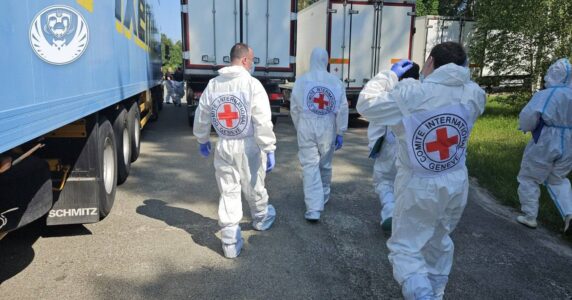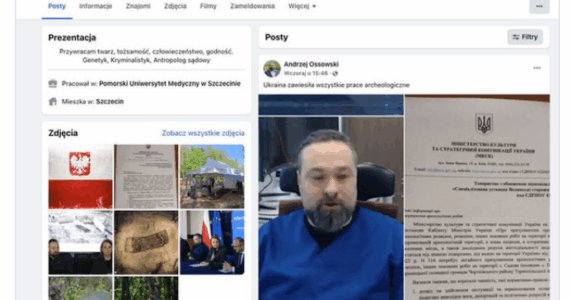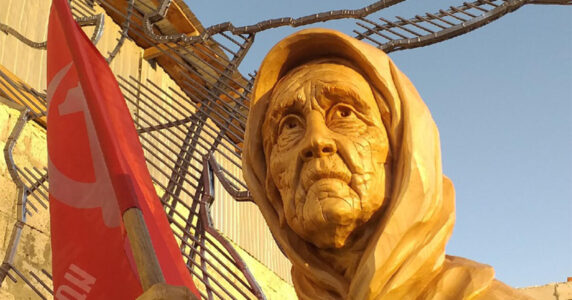Navigation and useful materials
Moscow is desperately looking for new “heroes” in the fight against Washington, and advise Europeans how not to freeze this winter. The Centre for Strategic Communication and Information Security has collected the main fakes and narratives for December 13.
- When Petrov and Boshirov will become MPs of the State Duma
- How propaganda firewood turned Russians into “Europeans”
- Why Putin needs blackout in Ukraine
- A plague on Russian shopping malls
When Petrov and Boshirov will become MPs of the State Duma
On December 12, Russian arms dealer Bout, who was serving a sentence in the United States and recently returned to Russia, became a member of the LDPR party. The story of his return turned into a real hysteria in Russia regarding “outmanoeuvring the Americans.”
After his return, Bout, of course, immediately reported that he fully “supports the war in Ukraine and does not understand at all why Russia did not start it earlier.”
IN FACT, the propaganda can be understood: when there is nothing to boast of in battles with the Ukrainians, Bout’s return, after serving 12 years, has to be “sold” as an epochal defeat of the United States.
Russian Media presents Bout’s return as if from American torture chambers (where, according to him, he was given overcooked hamburgers and “Bush legs”), a legendary hero who fought for the happiness of the working Russian people.
Let us remind you that Bout supplied weapons to terrorist gangs around the world (Sierra Leone, Angola, Rwanda, Sudan), for which he was sentenced for 25 years in the United States. The Americans caught him during a banal special operation in Thailand, recording Bout boasting of his connections in front of them. He is now in the LDPR and is likely to become a State Duma MP.
Bout’s colleague in Russian “liberal democracy” is Lugovoy, who, according to the verdict of the ECHR, is established as the direct executor of the poisoning of Aleksandr Litvinenko. On November 10, a speech was widely made public, in which he stated: “We demonstrate to the Ukrainian society our willingness to sow chaos and panic.”
And Bout gave his first interview to Butina, who was arrested in July 2018 in Washington on charges of links with Russian intelligence. She worked clumsily, immediately admitted her guilt. Having served 15 months in prison in the United States, after returning to Russia, she works on RT.
READ ALSO: RT: Why Russian State Media Has No Place in Civilized World
Butina is also an MP of the State Duma. The intellectual level of this “intelligence officer” is evidenced by the fact that in September, she assured everyone that after the pseudo-referenda in the temporarily occupied territories “the West will not supply long-range weapons to Ukraine. Because everyone understands that the consequences for Europe will be catastrophic.”
Her propaganda colleague is Anna Chapman. In June 2010, she was also arrested in the United States on espionage charges. She also pleaded guilty. Moreover, it was Chapman who caused (in fact turned everyone in) the biggest failure of the Russian agents and the biggest exposure of the Russian spy network (which had been operating in the US for 10 years) in the history of the FBI.
In Russia, instead of being punished, obstructed, or at least completely silenced, Chapman was turned into a national heroine. After her deportation to Russia in December 2010, she joined the Young Guard, the youth branch of the United Russia party. She is currently working for Ren TV.
READ ALSO: Russian TV propaganda loses signal in EU
This team of “professionals” in intelligence, parliamentarism, and propaganda lacks Petrov and Boshirov. But, given the trends, they can soon also be seen in the respective positions. Russian heroes reveal the real Russia: murderers, poisoners, “merchants of death,” clumsy spies. Led by the main one.
How propaganda firewood turned Russians into “Europeans”
Moscow, as you know, made a special bet on the second, “cold front” against the West to take Berlin. News about the winter apocalypse in Germany is regularly produced by Russian media.
The propaganda got into the character of its predictors so much that it moved from malice to a kind of survival instructions. Thus, Germans are encouraged to reduce overnight heating and turn off refrigerators to save money.
IN FACT, in Russia itself, there are ongoing emergency outages of heating. And not because of Western sanctions, but in view of the emergency condition of the utility system. Regional Russian news may give the impression that the Novosibirsk region is somewhere in icy Europe.
On October 12, Putin said that, because of anti-Russian sanctions, “ordinary Europeans are suffering. The population, as in the Middle Ages, began to stockpile firewood for the winter.”
Meanwhile, in Russia:
● RUB 498,000 was spent on firewood by the Buryat Republican Industrial Technical School.
● RUB 389,355 will be spent on firewood by “Kuytun district hospital” in Irkutsk region.
● RUB 175,500 was spent on firewood by “Totem Polytechnic College” in Vologda region.
● RUB 148,200 will be spent on firewood by “Sharya District Hospital” (!) in Kostroma region.
● RUB 72,000 was spent on firewood by Psychoneurological boarding school in Luzhniki in the Moscow region (!)
Thus, we can even assume that propaganda does not invent anything, it simply tells about the real problems of Russians, presenting them as “problems” of Europeans. Well, at least thanks to firewood, Russians turned into “Europeans.”
Why Putin needs a blackout of Ukraine
Russia has also decided to try and freeze Ukrainians. Putin officially announced this for the first time on December 8, when, with a glass of champagne in his hand, he did not deny that he was launching missile strikes on the Ukrainian energy infrastructure because “they started first,” referring to the strikes on the Crimean bridge, the power line from the Kursk nuclear power plant, as well as the fact that Donetsk is not supplied with water, calling it “genocide.”
As a reminder, since October, Russia has been deliberately shelling Ukrainian heat and water power plants. Almost all large infrastructural energy facilities were damaged — and millions of Ukrainians in various regions of the country were left without electricity and heat supply for a certain time.
On the bright side, so far, Ukraine has been able to avoid long blackouts. However, Minister of Foreign Affairs Dmytro Kuleba believes that a full blackout in Ukraine due to Russian missile strikes on energy infrastructure is still possible. According to the head of the MFA, the scenario of Ukraine facing a full power outage is quite “realistic.”
At the same time, he doesn’t believe this will lead to Ukrainians leaving the country en masse, but “they will rather try to relocate to rural areas where they can organize heating with wood burning.”
IN FACT, the notion of a “blackout” was first used in relation to the war in the UK after it joined World War II, reminds Signal. Back then, it was forbidden to turn on headlights and street lamps, and the windows in all houses were covered with thick curtains or cardboard or smeared with paint to make it difficult for enemy air raids. The same is happening in Ukraine this year.
Unfortunately, it did not fully save the UK from the consequences of night bombing that Germany started in 1940, and the country lost over 40,000 people. But without such precautions, there would have been even more victims and destruction.
The concept acquired its current main meaning — a complete power outage — in the USA, where blackouts occur due to weather or power system malfunctions. For a long time, the “Night of Terror” in New York City was considered one of the biggest power grid outages in the world. In 1977, due to a powerful thunderstorm, the electricity supply in the city and its suburbs could not be restored for almost a day.
Why is Russia now shelling Ukraine’s infrastructure and forcing us to use the word “blackout” more and more often?
Russia mostly destroys substations with its attacks. This was reported by head of Ukrenergo Volodymyr Kudrytskyi, who believes that the occupiers primarily want to disrupt the electricity delivery system.
Another possible goal of the strikes on the energy system is the suppression of Ukraine’s air defence systems. At the beginning of the war, the Russian aviation tried to act similarly to what happened in Syria: to bomb with impunity from medium altitudes. To achieve this, they had to suppress the Ukrainian air defences. We will remind you that back on March 9, Russia’s MoD lied that it had destroyed 90% of Ukraine’s missile defence systems, claiming they were very near achieving full dominance in the air.
However, Ukrainian air defence and aviation cleverly hid from strikes, avoided big losses and remained a threat for Russian planes, working from “ambushes.” Air defence systems caused losses to manned aviation, preventing it from operating in the depth of Ukrainian territory. Starting from mid-March, Russian aviation operated almost exclusively from low altitudes and did not risk crossing the front line at all.
In order to turn the situation around, according to experts, the Russian command changed tactics. They started choosing targets for new attacks in a way to lure out Ukrainian aviation and air defence systems, making them protect critical infrastructure.
READ ALSO: Ukrainians in a blackout. Why power is actually turned off
American military officer Thomas Griffith studied post-World War II blackouts: ones in North Korea, Vietnam, and the Persian Gulf War.
Griffith believed that such attacks have several strategic goals. First, limiting the power supply of the enemy’s military forces. But he said this could be achieved only partly: the army just receives priority access to all the remaining reserves (which is at least 15% of the capacity).
The second goal, reducing production capacity, usually works out better. But even here, the effectiveness of blackouts is limited: if the country is small and enjoys the support of allies, it will not be too difficult to redistribute the missing weapons and goods.
The situation is even more difficult with suppressing people’s will and spirit: having united against the enemy, the population believes in the army and in the country’s leadership even more, becoming even readier to resist.
In summary: such attacks can have several objectives. But in all of them, Russia loses to Ukraine.
A plague on Russian shopping malls
And finally, since Russia lacks warmth (in every sense of the word), they decided to find alternative ways of heating, it seems: there have been multiple big fires at large enterprises and shopping malls recently.
On December 12, two major fires broke out in Russia. First, the “Stroypark” shopping mall in Balashikha near Moscow caught fire. Later, in Tatarstan (city of Nizhnekamsk), a large fire fully destroyed a rubber warehouse of 6,000 square metres.
On December 9, a large-scale fire broke out in the Moscow construction hypermarket OBI in the “MEGA Khimki” shopping mall on the Leningrad highway.
And here is the chronicle of recent fires in Russian shopping malls
- In Kemerovo, on March 25, 2018, the “Winter Cherry” entertainment and shopping mall burned down. 60 people died, including 37 children.
- On April 4, 2018, the “Perseus for Children” shopping mall caught fire in the east of Moscow.
- On June 9, 2018, the “Menshikov Hall” shopping mall caught fire in Lomonosov.
- On November 10, 2018, 4,800 m² burned down in the “Lenta” shopping mall in St. Petersburg.
- In Makhachkala, on February 25, 2020, a fire broke out in the “Passage” shopping mall. The area of the fire was 2.5 thousand m².
- Another “Lenta” burned in Tomsk on December 21 last year. The fire spread over an area of 5 thousand m², 3.5 thousand m² of the roof collapsed.
- On April 28 of this year, the roof of the “Gagarinsky” television centre in the town of Ishim, Tyumen region, caught fire. The area of the fire was 4,800 m².
- On November 5, the Polygon café in Kostroma burned down, killing 13 people. The criminal is a 23-year-old military servant who returned from Ukraine.
IN FACT, Russia is already saying that the large recent fires in shopping malls have been organized by an effective network of “arsonists,” whom the authorities cannot handle right now. This is indicated not only by the number of fires, which is constantly increasing, but also, for example, by the rhetoric of ex-president Medvedev, who has twice recently spoken harshly about saboteurs.
The total losses from the latest fires in Russia are already gradually reaching the scale of war expenditures in Ukraine. For example, the consequences of just one fire in Moscow on December 9 were estimated at 20-30 billion rubles.
Other experts believe that under the conditions of sanctions, it is easier for owners to receive insurance payments instead of maintaining loss-making enterprises. So, they are probably the ones setting their own businesses on fire.
There are many versions, but they all lead to the same conclusion — a significant part of the current fires in Russia is the result of a rigorous savings mode. They are especially saving money on safety, which was never a priority in Russia anyway. Add the rapid decline of management culture, which applies to all sectors, public and private alike.
Psychologically, Russians are already in the “screw it” mode. So the fires will probably continue. And let them burn.
Centre for Strategic Communication and Information Security
If you have found a spelling error, please, notify us by selecting that text and pressing Ctrl+Enter.


